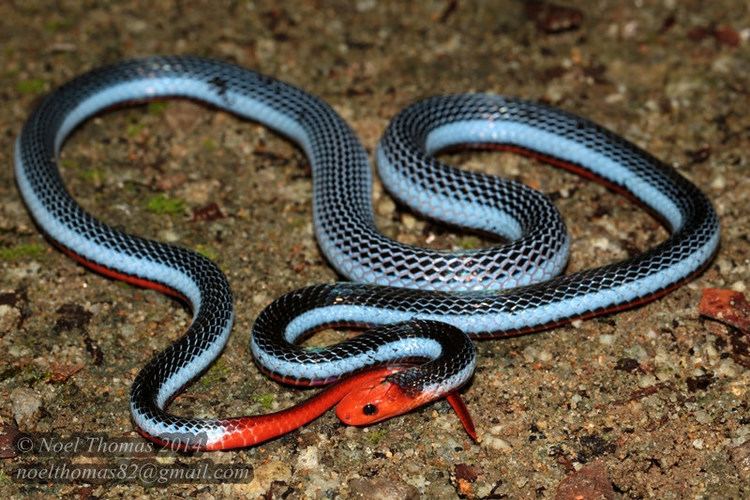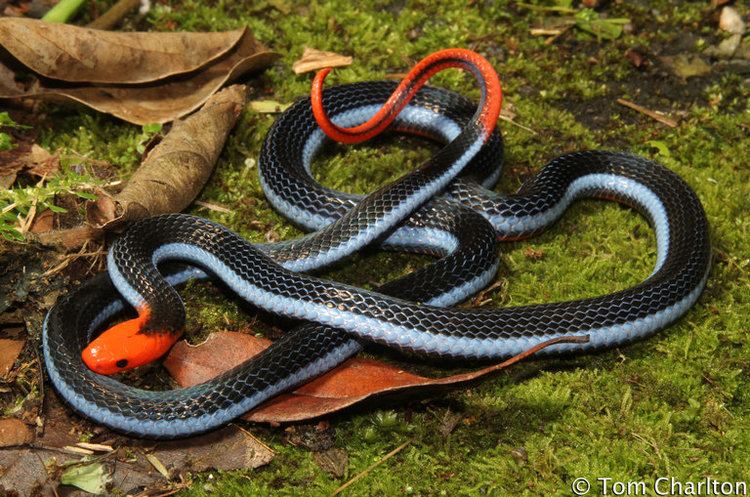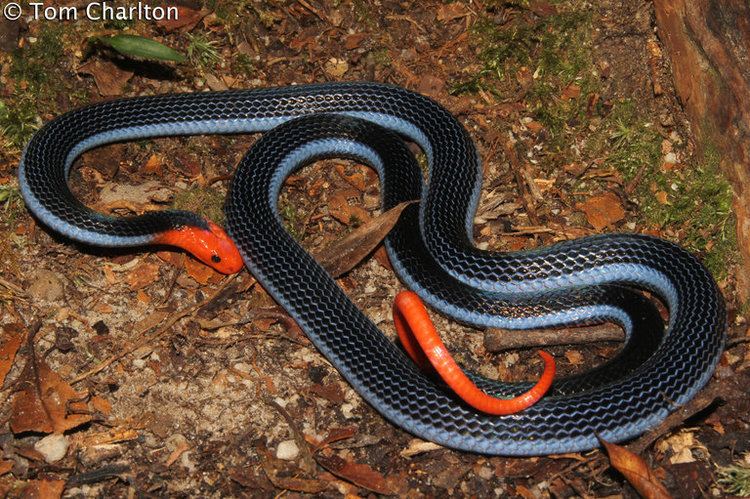Kingdom Animalia Subphylum Vertebrata Suborder Serpentes Scientific name Calliophis bivirgata Rank Species | Phylum Chordata Order Squamata Family Elapidae Higher classification Calliophis | |
 | ||
Similar Calliophis, Snake, Reptile, Elapidae, Red‑headed krait | ||
Calliophis bivirgata (syn. C. bivirgatus) is a species of snake in the family Elapidae known commonly as the blue coral snake or blue Malayan coral snake. It is native to Southeast Asia.
Contents
Geographic range and distribution

This terrestrial snake occurs in Brunei, Indonesia, Malaysia, Singapore, Thailand, and Burma. It lives at 100 to 1100 meters in elevation.
There are three subspecies:

Description

This species was assigned to the new world coral snake genus Maticora until phylogenetic studies revealed this species to be nested within the tropical coral snake species clade Calliophis and sister species to Calliophis intestinalis, the banded Malaysian coral snake.

This is a medium-sized coral snake with a slender body. The adult can reach 1.8 meters long. It has a red head, tail and belly. The back is dark blue to black in color, and it usually has a large blue or white stripe on each flank.

The snake, especially when juvenile, is often confused with the pink-headed reed snake (Calamaria schlegeli) as they share similar habitat and appearance. But the latter is much smaller, reaching a maximum length of 50 cm (20 in). The reed snake is nonvenomous, while the coral snake is potentially lethal.
Biology
This uncommon snake is considered semi-fossorial and is found in the leaf litter of primary and secondary forests. It preys on other snakes. When threatened it usually flees, but it may remain in place with its red tail erect as a defensive message.
Venom
The potent venom has very occasionally caused human deaths. This species has unusually long venom glands, extending to one-fourth of the length of the body.
Unlike other snakes of the family Elapidae, its venom does not contain a neurotoxin. The toxic element is a cytotoxin that leads to the destruction of muscle tissue. Phosphodiesterases promote the release of adenosine, which causes hypotension, inflammation, and neurotransmitter blockade in prey items and other bite victims.
